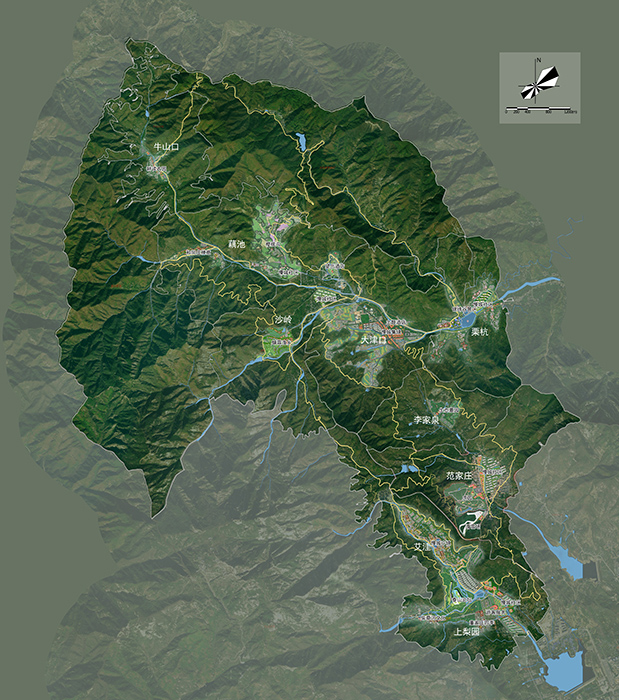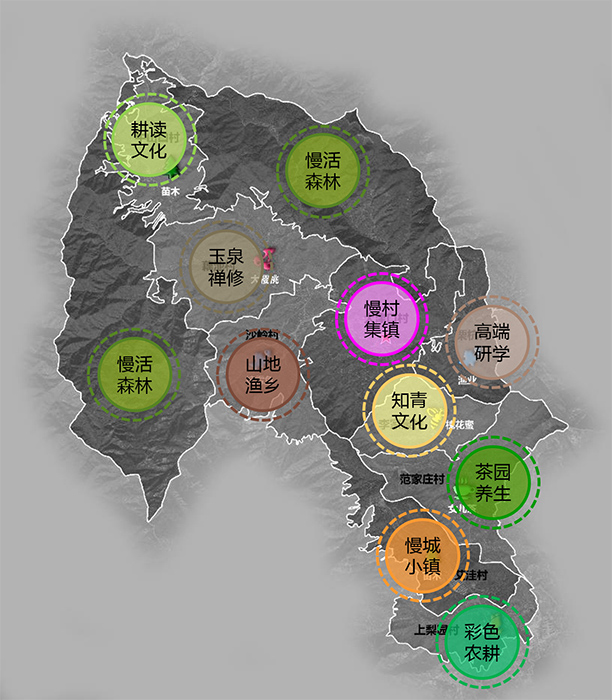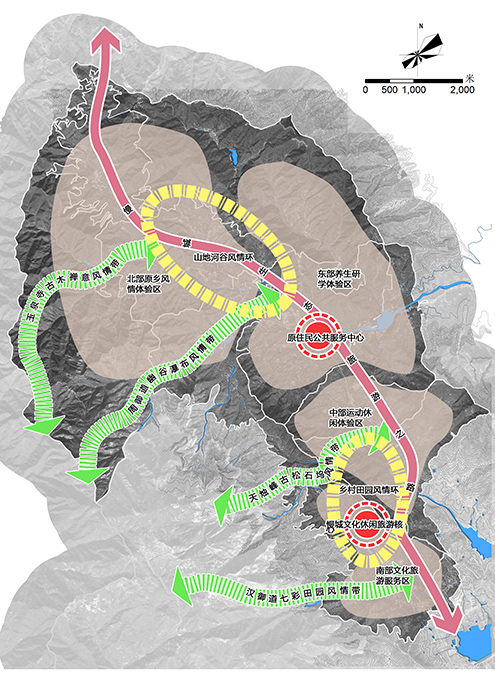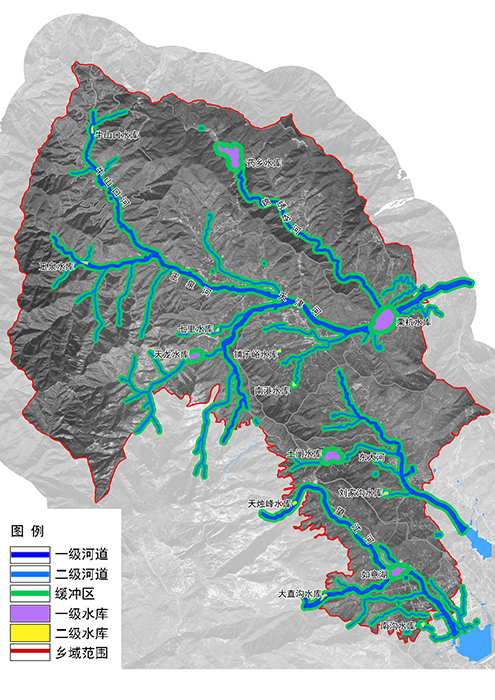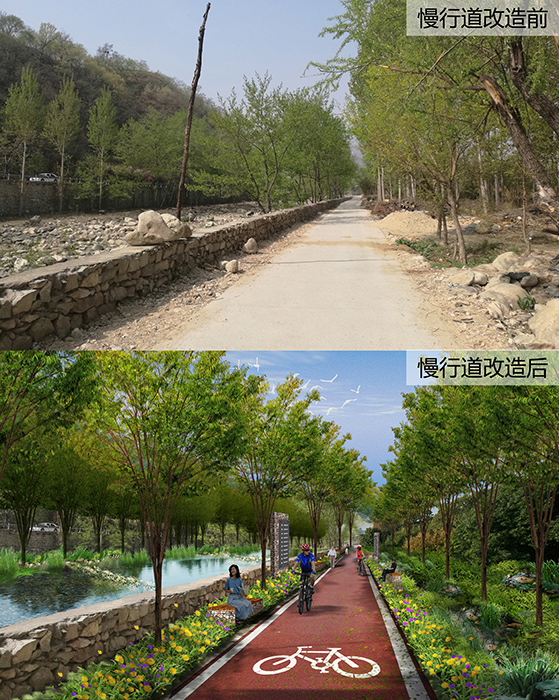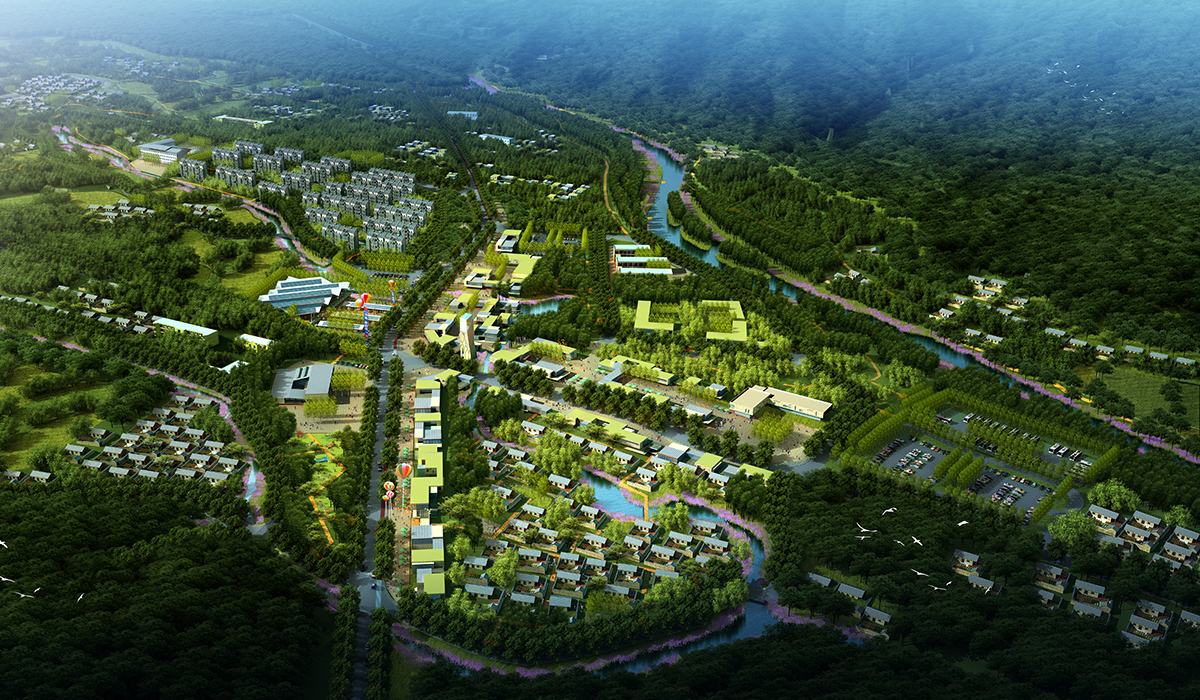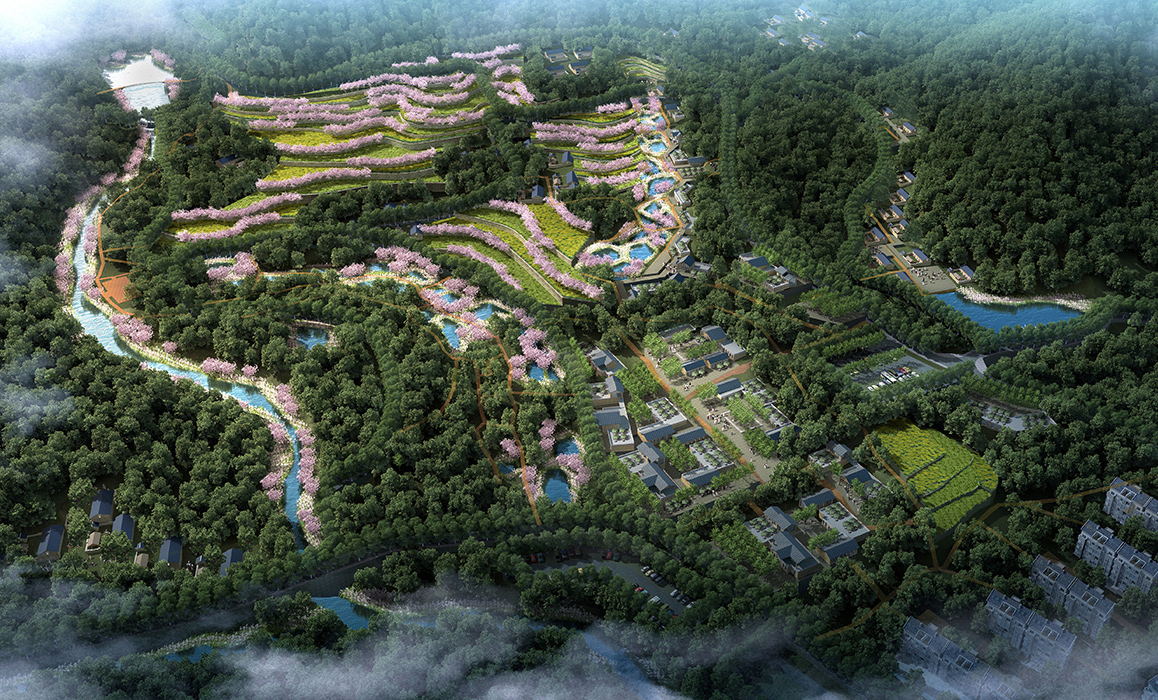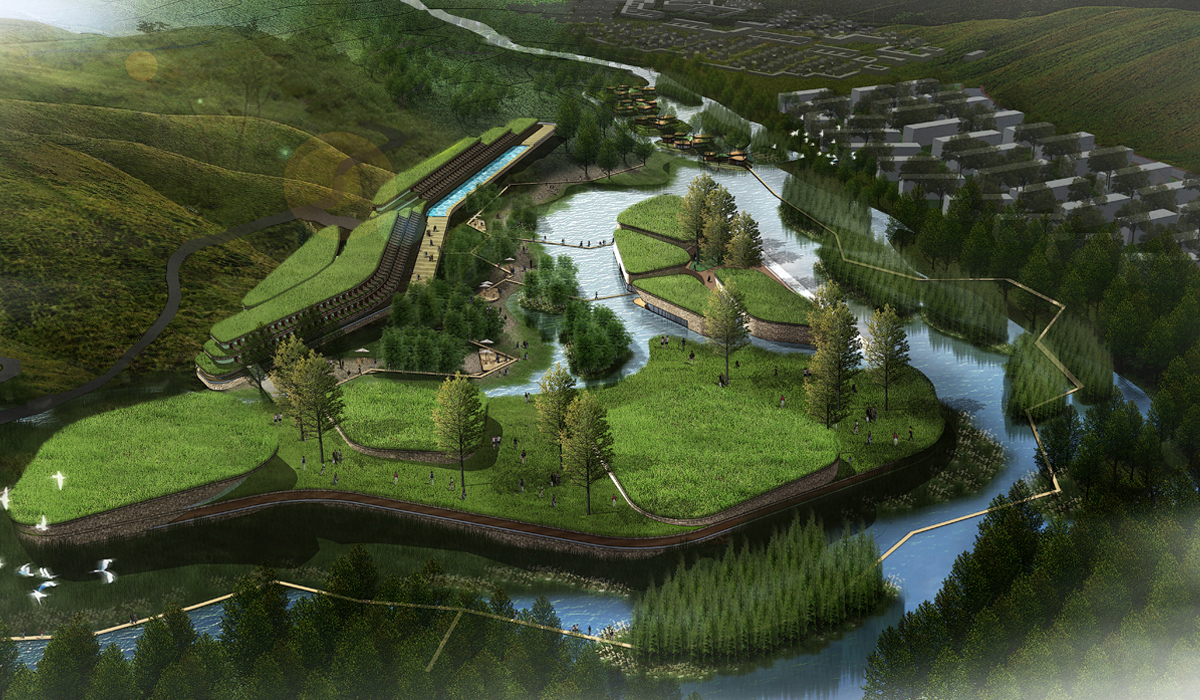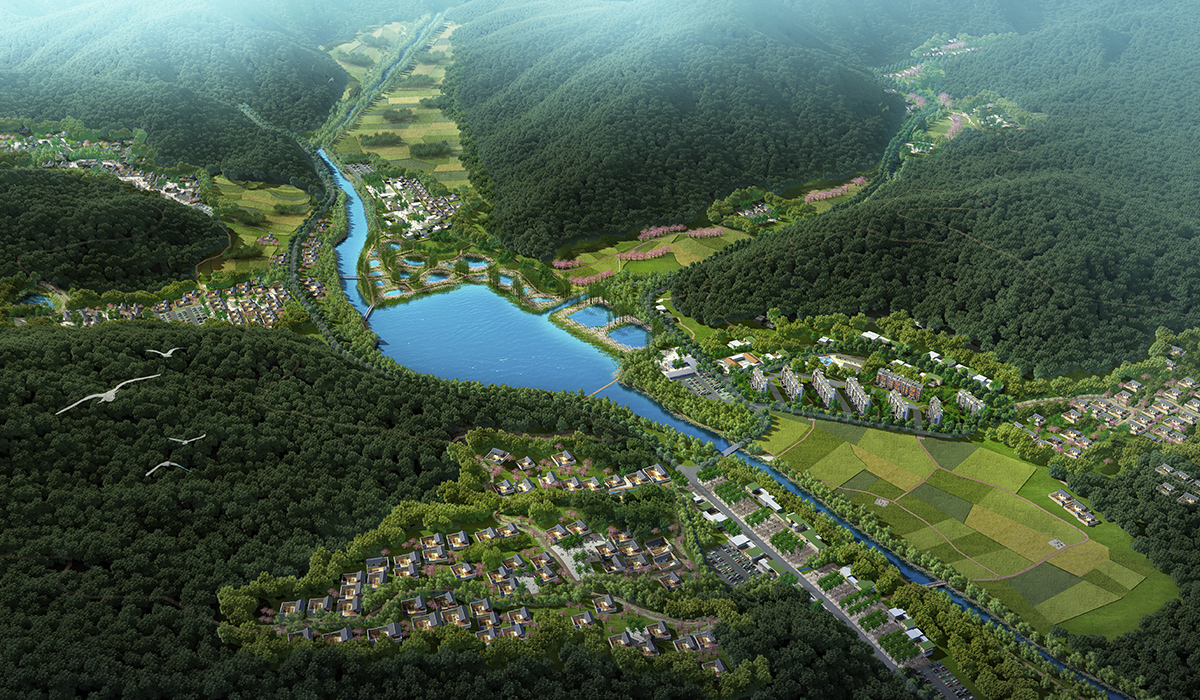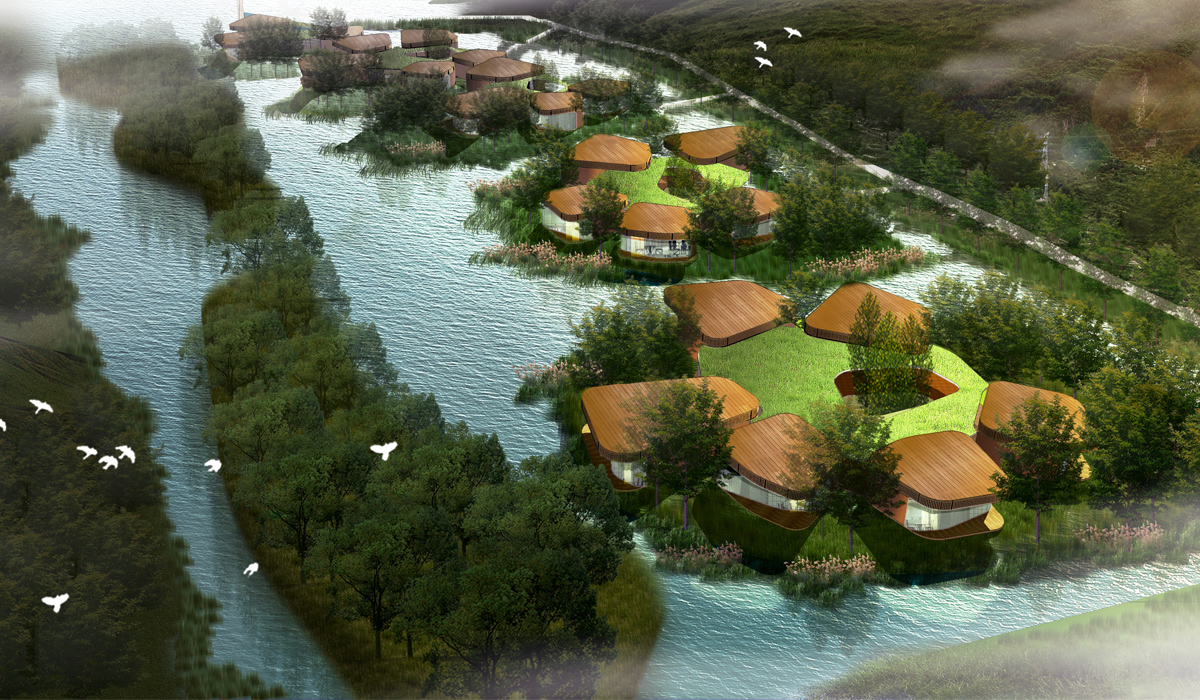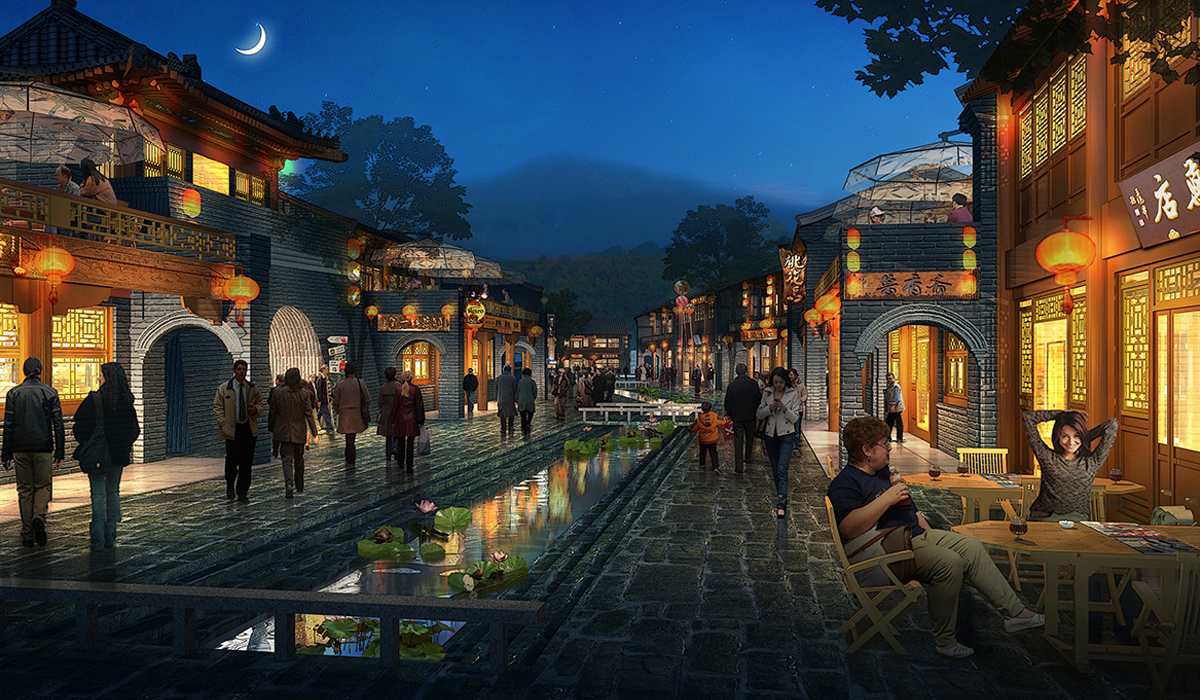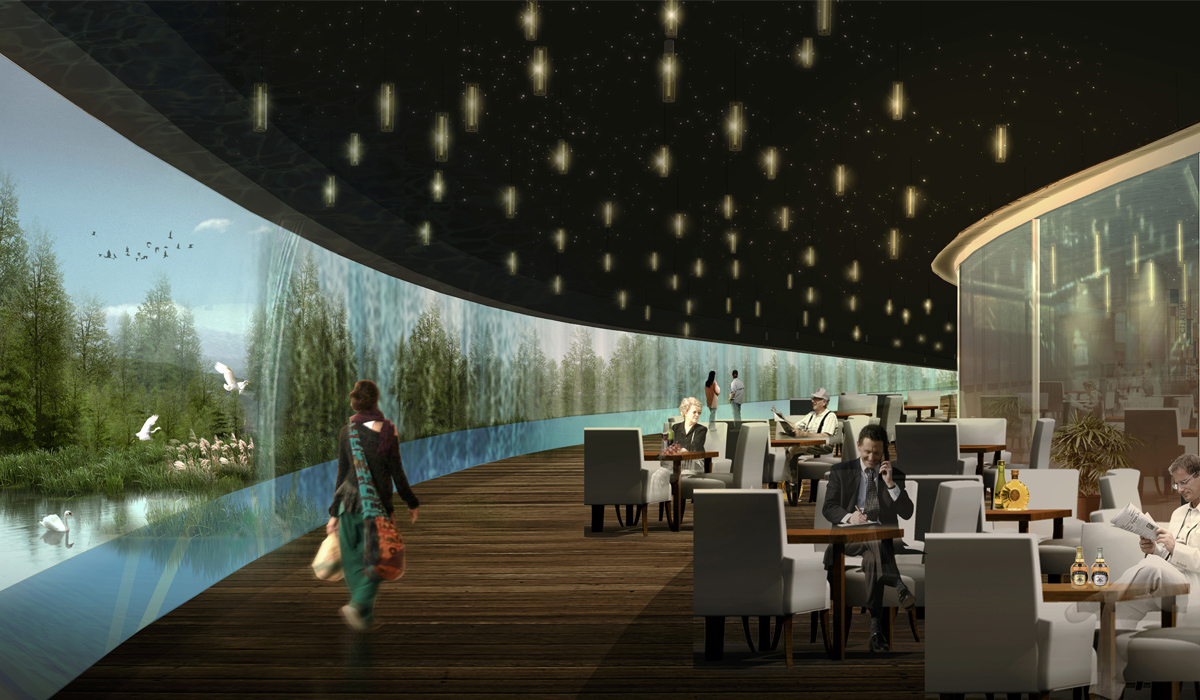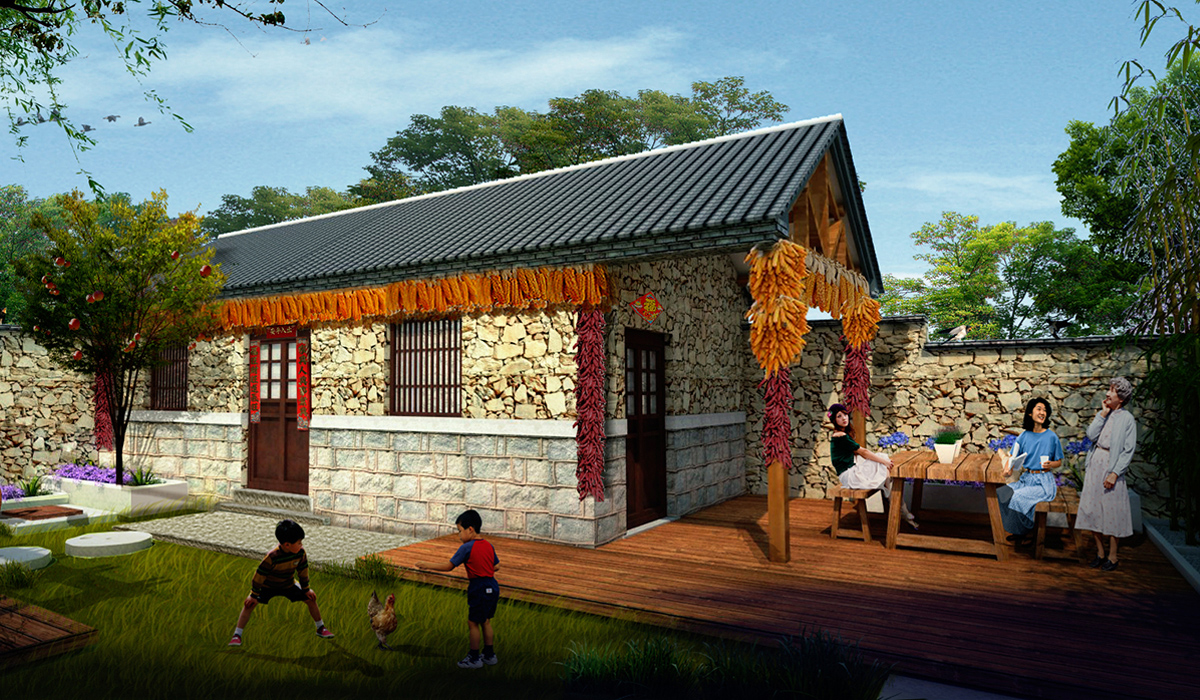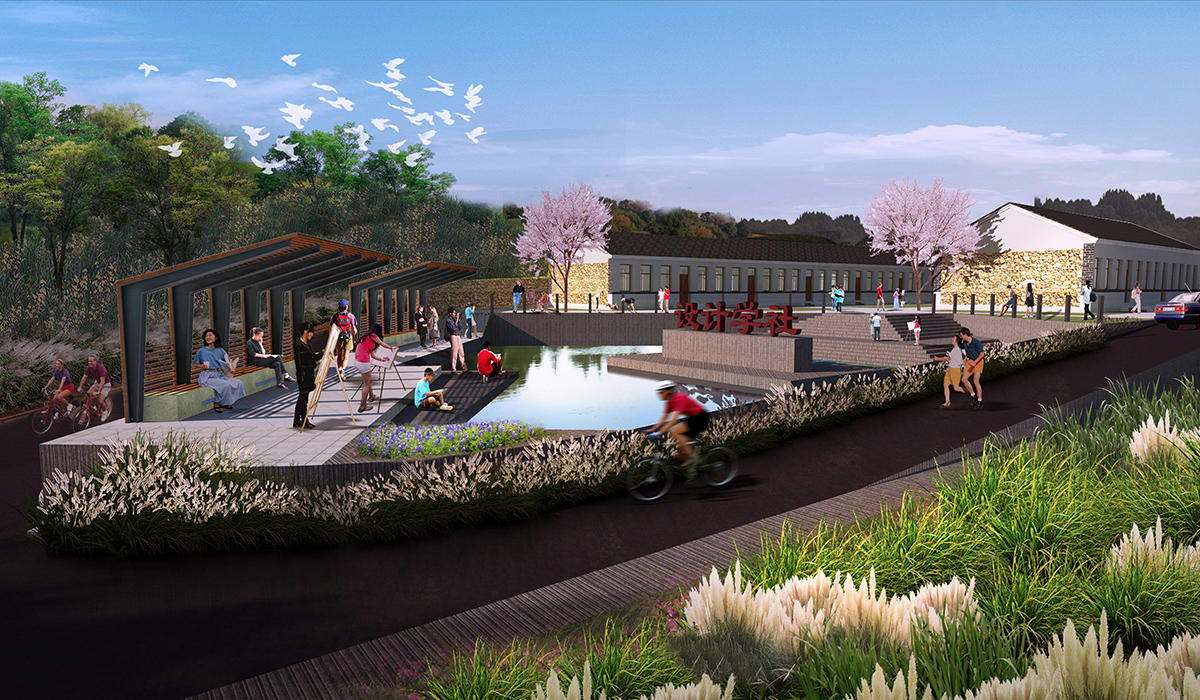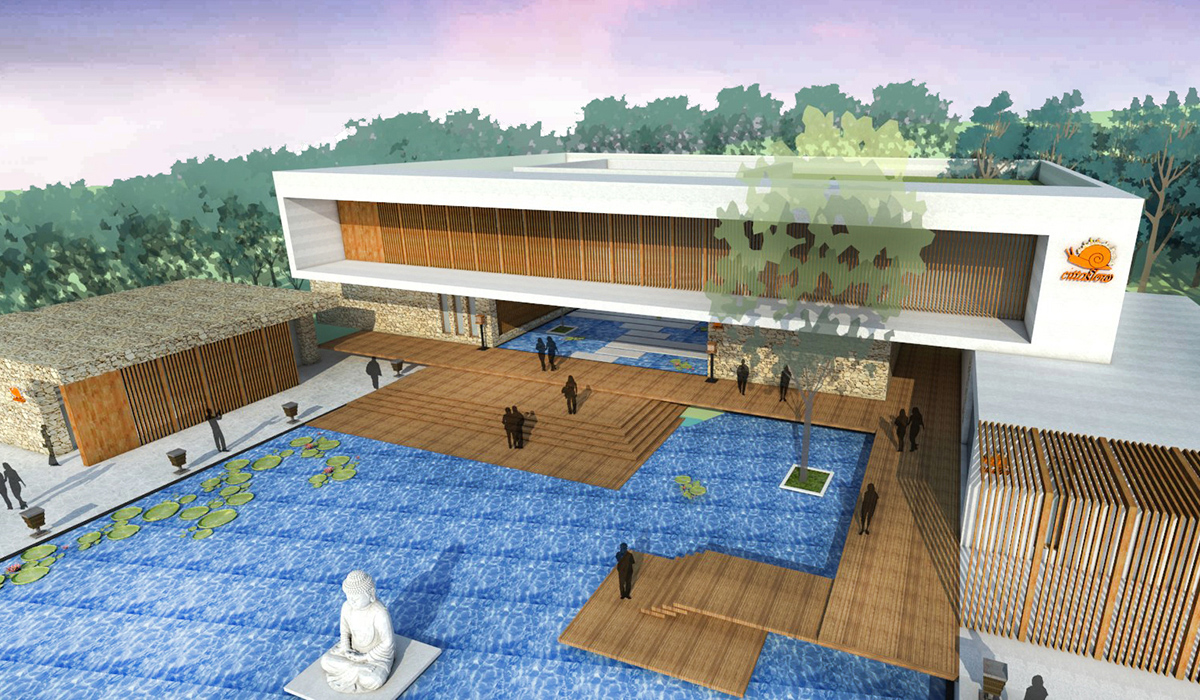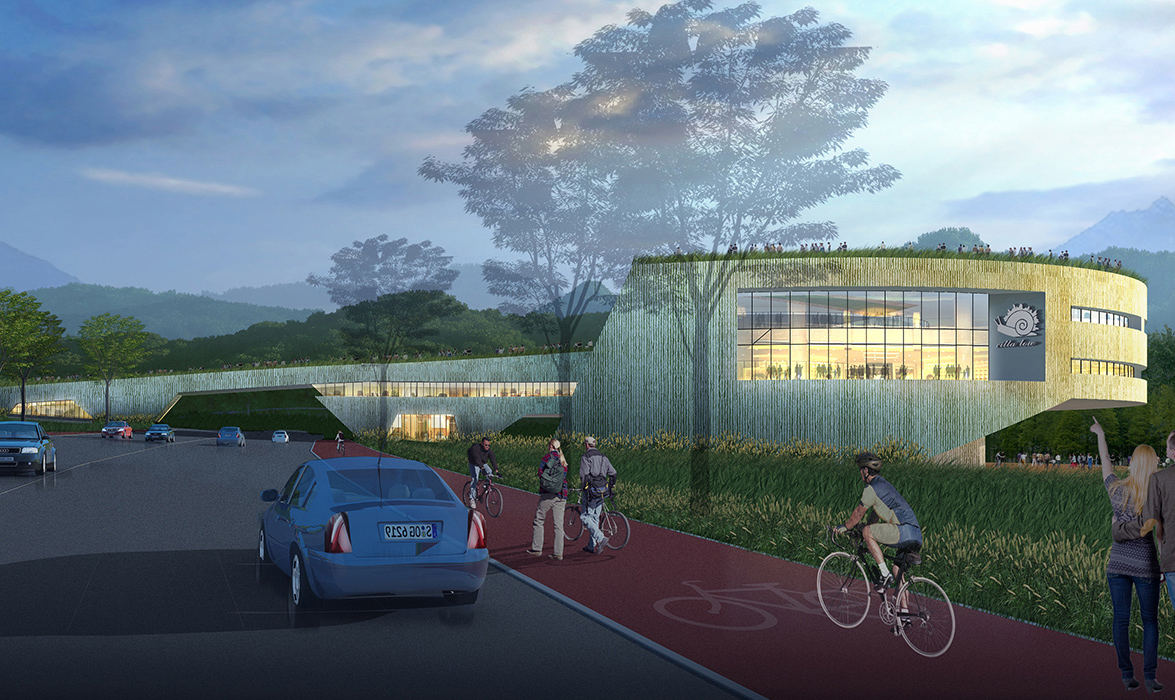East Mount Tai Slow City Planning
Project Information
- Project Location:
- China Tai'an, Shandong
- Project Scale:
- 62.37 Square Kilometers
- Design Time:
- May 2016
- Client:
- Mount Tai Cultural Industry Park Project Construction Command Headquarters
Project Profile
1. Project Statement
The project integrates the "slow city" concept, merging the "slow city" and "Mount Tai" brands. It innovatively combines "anti-planning" with theories of ecological infrastructure, sponge city, and the Slow City Charter, proposing a slow city construction system composed of seven elements: slow ecology, slow travel, slow life, slow industry, slow services, slow care, and slow cooperation. This system guides the construction and development of the slow city through planning control guidelines. By exploring the local resources and cultural connotations of Mount Tai, the project aims to create Tai Shan Slow Valley (International Slow City) with the four distinctive features of safety, health, culture, and livability. It proposes a new development model of slow city co-built by scenic areas, parks, communities, and villages.
2. Objective and Challenge
The project is located in the eastern part of Tai'an City, Shandong Province, covering 62.37 square kilometers, including nine administrative villages of Dajinkou Township and parts of Yaoxiang Forest Farm and Tai Shan Forest Farm. The area has excellent natural conditions, with ancient chestnut and pine forests scattered among the villages and several cultural relics such as Han and Qin imperial roads. With its unique natural and cultural resources, Mount Tai received 5.468 million tourists in 2017, indicating great tourism market potential.
The project faces several challenges:
Mount Tai primarily focuses on traditional sightseeing and mountain climbing, lacking leisure and experiential projects. Tourists' stay is short and fast-paced, with tourism income below the Shandong provincial average.
Numerous surrounding tourism projects pose competitive challenges.
The project area is vast with many villages, similar resource types, and landscape features, making it difficult to highlight individual characteristics.
3. Design Strategy
Strategy 1: Introduce the "Slow City" Concept to Create Tai Shan Slow Valley
The plan introduces the "slow city" concept, merging it with the Mount Tai brand to encourage tourists to slow down and stay longer, promoting comprehensive tourism, family tourism, and the new up-and-down movement. Ultimately, Tai Shan Slow Valley (International Slow City) aims to become a national health and leisure tourism destination, a national family tourism destination, and a world heritage tourism destination.
Strategy 2: Tailored Approach for Four Slow City Characteristics
The plan is based on majestic mountains, deep valleys, ancient tea gardens, and stone-built villages as the ecological foundation. The slow city’s industrial foundation is the "1+3" industry. The spiritual foundation is national stability and unity—national peace and good weather. The core driving force is promoting the most distinctive Mount Tai cultures: Fengshan culture, folk culture, religious culture, farming culture, and hospitality culture. It integrates sightseeing, physical activities, family entertainment, agritourism, study tours, and vacation stays, creating the safest, longest-living, culturally rich, and most livable international slow city.
Strategy 3: Combine Local Concepts with the Slow City Charter
Combining "anti-planning" with theories of ecological infrastructure, sponge city, and the Slow City Charter, the project proposes a slow city construction system with seven elements: slow ecology, slow travel, slow life, slow industry, slow services, slow care, and slow cooperation. Planning control guidelines will guide the construction and development of the slow city.
Strategy 4: Village Specialties and Slow Paths for Coordinated Development
The plan shapes village characteristics based on location, historical context, and natural and cultural resources, with ten functional zones: Pear Garden Slow City Flower Town, Aiwa Slow City Town, Tai Shan Forum, Fanjiazhuang Health Park, Lijiaquan Memory Home, Dajinkou Slow Village Town, Shaling Fishing Slow City, Ouchi Meditation Slow City, Niushankou Farming Garden, and Slow Living Colorful Forest. These zones are connected by slow paths, forming an overall layout of "two mountains, one valley, one road with two loops, nine villages and twelve scenes, and an imperial road to Mount Tai."
Strategy 5: A New Model of Slow City Development
The plan abandons the traditional model equating slow city construction with tourism development, proposing a new model of slow city development co-built by scenic areas, parks, communities, and villages. While developing tourism, it also improves community service facilities, enhances the living environment, and provides employment and entrepreneurial opportunities for local residents.
4. Conclusion
Currently, Tai Shan Slow Valley (International Slow City) is under construction and preparing for international slow city certification. This plan clarifies the tourism development positioning of the eastern region of Mount Tai, promotes the investment work of the Tai Shan Slow Valley (International Slow City) project, and guides its orderly construction. Ecologically, the planning control guidelines strictly control air, water quality, and biological protection to ensure Mount Tai's excellent ecology is not damaged during tourism development. Economically, the project will extend tourists' stay, enhance their experience, and improve the living standards and entrepreneurial abilities of local farmers. With the completion of Tai Shan Slow Valley (International Slow City) and the opening of the eastern tour route, it will drive the economic takeoff of the eastern region of Mount Tai. Socially, the project will balance and alleviate the tourist flow to Mount Tai, enhancing the quality of tourism. Tai Shan Slow Valley will also become a window for showcasing Mount Tai culture to the world.

